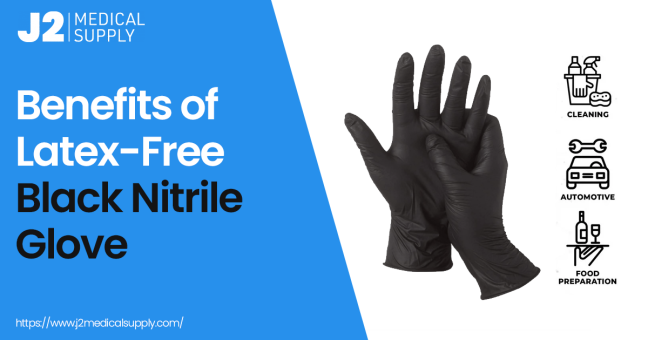The importance of personal protective equipment (PPE) cannot be overstated in today’s world, especially in the face of the COVID-19 pandemic. When choosing the proper protective attire, two standard options that come to mind are isolation gowns and coveralls. Both options offer protection against various hazards, but understanding their differences is crucial in making an informed decision. In this article, we will compare isolation gowns and coveralls, highlighting their essential characteristics and helping you determine which option offers better protection for specific situations.
Examining the Armor: Isolation Gowns vs. Coveralls – Which Reigns Supreme?
Isolation gowns are PPE designed to provide barrier protection against bodily fluids, germs, and other contaminants. They are typically made from non-woven materials and feature long sleeves, a closed back, and ties at the neck and waist for secure fitment. Isolation gowns are commonly used in healthcare settings, laboratories, and other environments where protection against fluid exposure is essential.
Key Features and Benefits of Isolation Gowns
1- Fluid Resistance
Isolation gowns offer varying levels of fluid resistance, ensuring protection against liquid splashes and spills. They are designed to repel fluids, preventing them from permeating the fabric and contacting the wearer’s skin.
2- Comfort and Breathability
Isolation gowns are lightweight and breathable, providing comfort during extended wear. The breathable fabric allows airflow, reducing heat buildup and ensuring a more comfortable experience for the wearer.
3- Ease of Use
Isolation gowns are easy to put on and take off, typically featuring a tie-back or hook-and-loop closure. This makes them convenient for healthcare professionals who need to change gowns frequently while maintaining efficiency in their workflow.
Understanding Coveralls
Coveralls, on the other hand, are full-body protective garment that covers the wearer from head to toe. They are typically made from non-woven materials or other durable fabrics and feature long sleeves, full-length pants, and a front zipper closure. Coveralls provide comprehensive protection against various hazards, including liquid splashes, aerosols, and particulate matter. They are commonly used in industrial settings, such as chemical plants, construction sites, and manufacturing facilities.
Key Features and Benefits of Coveralls
1- Full-Body Protection
Coveralls provide complete coverage, including the torso, arms, legs, and often the head. They minimize the risk of exposure to hazardous substances by ensuring that no part of the body is left unprotected.
2- Barrier Properties
Coveralls offer excellent barrier properties, protecting against both liquid and airborne contaminants. The materials used in their construction are often more resistant to permeation, providing a higher protection level than isolation gowns.
3- Durable and Resilient
Coveralls are designed to withstand rigorous use and provide long-lasting protection. They are often made from durable materials such as polyester or polypropylene, ensuring their resilience in demanding work environments.
Key Differences between Isolation Gowns and Coveralls
While isolation gowns and coveralls offer protection, there are significant differences when selecting the appropriate PPE option. Here are some key factors to keep in mind:
1- Protection Level
Isolation gowns and coveralls differ in their level of protection. Isolation gowns are primarily designed to protect against fluid exposure, providing a barrier against splashes and spills. Coveralls, on the other hand, offer more comprehensive protection, including resistance to both liquid and airborne hazards.
2- Comfort and Mobility
Comfort and mobility are crucial for PPE wearers, especially during long hours of use. Isolation gowns are generally lightweight and breathable, allowing for greater comfort and ease of movement. Coveralls, while providing more coverage, can be slightly bulkier and more restrictive in comparison.
3- Durability and Reusability
Isolation gowns are typically disposable, designed for single use, and easy disposal after each interaction. Coveralls, depending on the material, can be more durable and reusable with proper cleaning and maintenance protocols. This factor is significant when considering long-term cost-effectiveness.
4- Ease of Donning and Doffing
Donning and doffing PPE properly is critical to ensure adequate protection and prevent contamination. With their open-back design and tie closures, isolation gowns are relatively easy to put on and take off. Coveralls with zipper closures require proper technique and practice for efficient and safe donning and doffing.
5- Coverage and Barrier Properties
Isolation gowns typically cover the torso, arms, and legs, offering moderate protection against fluid exposure. Coveralls, with their full-body coverage, provide a higher level of security, ensuring minimal exposure to hazardous substances.
Choosing the Right Option for Specific Situations
The choice between isolation gowns and coveralls depends on the specific environment and level of protection required. Let’s explore their suitability in different settings:
- Isolation Gowns vs. Coveralls for Healthcare Settings
In healthcare settings, where protection against fluid exposure is crucial, isolation gowns are commonly used. They provide adequate protection during routine patient care, minor procedures, and other non-aerosol-generating activities. However, coveralls with appropriate respirators may be recommended when there is a higher risk of aerosolized particles or airborne pathogens.
- Isolation Gowns vs. Coveralls for Industrial Settings
Industrial settings often involve exposure to various hazards, including chemicals, biological agents, and particulate matter. Coveralls offer better overall protection in such environments due to their comprehensive coverage and barrier properties. They are designed to safeguard workers against both liquid and airborne contaminants, ensuring a higher level of safety.
- Isolation Gowns vs. Coveralls for General Use
For general use outside of healthcare and industrial settings, such as in public settings or during household activities, the choice between isolation gowns and coveralls depends on the level of anticipated exposure. Isolation gowns may be suitable for low-risk activities where the main concern is protecting against splashes or spills. Coveralls, while providing more extensive coverage, are more practical for situations involving potential exposure to various hazards.
In conclusion, when comparing isolation gowns and coveralls, it is essential to consider the specific requirements of the intended environment and the level of protection needed. Isolation gowns are ideal for fluid-exposure protection in healthcare settings, while coveralls offer comprehensive protection against multiple hazards in industrial settings. Ultimately, the choice between isolation gowns and coveralls should be based on a thorough risk assessment and adherence to relevant safety guidelines, ensuring workers’ and individuals’ safety and well-being. Rest assured, be it coveralls or isolation gowns, J2 Medical Supply has you covered. So head on to our website now to view our collection.
Stay safe and stay informed with J2 Medical Supply!




